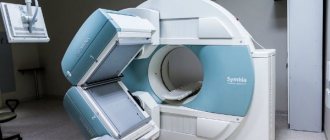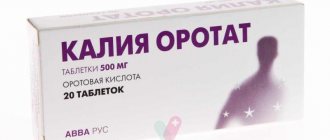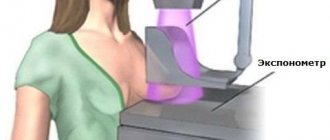In this article we will look at the age at which a child can undergo fluorography. This diagnostic method shows changes in the density of organs located in the chest, which may indicate the presence of any pathologies.
To avoid the spread of one of the most dangerous infectious pathologies of the respiratory system, every person is advised to undergo a preventive examination annually. For this, a wide variety of techniques are used, including fluorography.
What is this?
It is a screening method. Unfortunately, not all parents know at what age photographic research can be carried out on children, so as not to cause damage to the child’s development and well-being. Fluorography is necessary in order to detect pathological changes in the lungs at the earliest stages, when there are no external symptoms. This approach is extremely important for successful therapy and full recovery.
Many parents are interested in the date at which fluorography is performed on children.
The fluorographic examination procedure is absolutely painless, provides a high percentage of detection of tuberculosis, but is not completely safe. Fluorography has some contraindications, one of which is childhood. Choosing the right diagnostic method for suspected tuberculosis will allow you to understand the essence of the study, its effect on the body, the likely consequences of radiation and refusal to carry it out.
At what age can a child have fluorography, we will tell you below.
How often can fluorography be done?
SanPiN standards establish the frequency of mandatory fluorographic examination once a calendar year for the preventive purpose of identifying the early stages of development and treatment of tuberculosis. However, people with special indications need this procedure more often - once every six months. This category of patients includes:
- people surrounded by a person diagnosed with pulmonary tuberculosis;
- medical personnel of maternity wards, as well as anti-tuberculosis dispensaries and sanatoriums;
- patients with a history of severe chronic diseases;
- young men called up for military service;
- former prisoners who returned from prison.
How long is fluorography valid?
The results of the fluorographic examination remain valid for one calendar year.
Description of fluorographic examination
Fluorography is a technique for studying the respiratory organs, which is performed using X-rays and specialized equipment that records their shadows as they pass through the chest and the organs located in it. Using fluorography, it is possible to determine with a high degree of accuracy the condition of the respiratory organs, the absence or presence of pathological changes in the lung tissues, darkening, and neoplasms.
Fluorography is an informative study and belongs to narrowly focused diagnostic techniques: unlike ultrasound and x-ray examination, it is used exclusively for examining organs located in the chest.
Previously, fluorographic examination could be done using a film apparatus. Currently, it is performed using digital devices, which reduce the dose of radiation received and reduce the potential harm to health.
At what age can a child have fluorography?
All adults and teenagers over 15 years old must take it every year. In some cases, it is performed more often, without taking into account the age of the patient being examined.
Features of the procedure for children
The patient does not require any special preparation. After a person has entered the fluorography room, he is asked to undress to the waist and stand in the apparatus cabin (somewhat similar to an elevator cabin). The x-ray technician fixes the patient in the desired position, asks him to press his chest against the screen and not make breathing movements for several seconds. After these steps, the specialist presses the “Start” button and the procedure is completed.
All actions are extremely simple, it is impossible to make a mistake - they take place under the control of qualified personnel.
The need for fluorography for children
Experts recommend fluorographic screening from the age of 14, when a mantoux test is inappropriate. The study is indicated in cases of a sharp increase in the likelihood of infection with tuberculosis microorganisms during epidemics or after being in foci of infection, contacts with people suffering from an active form of tuberculosis. Also, fluorography can be prescribed to confirm the alleged diagnosis when a child has complaints typical of tuberculosis, or other examinations have revealed signs of pathology. The study is also necessary to find out the cause of pathologies of the respiratory organs in children when symptoms of tuberculosis are present, but the Mantoux test gives a negative result and the likelihood of contact with a person infected with an open form of tuberculosis is excluded.
At what age a child can have fluorography is now known.
At the age of 14, a specialist may refer the child for an ultrasound or x-ray examination - such research methods are recognized as safer. At an earlier age, even small doses of radiation can provoke serious pathologies and developmental disorders. That is, fluorography is usually not performed on a child per year.
Early signs of suspected tuberculosis
When infected with Mycobacterium tuberculosis, the symptoms are vague and insignificant. If the Mantoux test is positive, the mother is asked if she has noticed the following signs:
- weight loss or cessation of weight gain in the child;
- increased sweating, mainly during sleep at night;
- adynamic child (decreased activity), weakness, drowsiness;
- constant increase in body temperature (may be in the low-grade range - up to 37.5˚C).
Fluorography is an important screening necessary to prevent the spread of tuberculosis, helps to identify those infected and provide timely therapy. In childhood, due to the physiological characteristics of the growing organism and the harmfulness of the technique, a Mantoux test is performed.
Epidemiological situation and region
An important role is played by the epidemiological situation and the region where the study is conducted. For example, until recently in Russia and Ukraine, fluorography was allowed for adolescents aged 14 years and older. But in accordance with the new legislation, in Russia this age has been increased to 15 years, while in Ukraine it has remained the same. This is due to the fact that an epidemic of tuberculosis has been recorded in Ukraine, and in Russia there has been a decrease in the incidence of this pathology.
Thus, fluorography can be prescribed to an infant, but only in cases of exceptional and urgent need.
At what age can teenagers undergo fluorography?
Fluorography of infants
The feasibility of conducting the study is explained by the fact that:
- The lung volume in adolescents is the same as in adults, which means that changes can already be seen in the image;
- in adolescence, active growth zones are closed and irradiation will no longer have a fatal effect on the body;
- the Mantoux test loses its relevance, since in 100% of cases the child’s body has already encountered an infection and it will always be positive;
- hormonal changes during puberty increase the risk of developing infectious pulmonary pathology.
Fluorography is carried out en masse. A mobile device is brought to the school premises, or children are removed from classes in order to undergo the study. School management may not allow a teenager to attend classes who has not passed the examination.
Indications for carrying out
Fluorography can be performed on young children when the likelihood of harm from the procedure is significantly less than the likelihood of not diagnosing tuberculosis:
- With severe symptoms of tuberculosis.
- If the child’s surroundings include people who suffer from an active form of tuberculosis.
- If confirmation of the diagnosis is required after receiving a positive Mantoux test result.
These are the main indications for pediatric fluorography.
What to do if the Mantoux test is positive
The Mantoux test is performed as a subcutaneous injection of tuberculin on the inner surface of the wrist. After 72 hours, the result is assessed using a ruler. A papule size greater than 12 mm is positive. If the Mantoux tuberculin test is positive in a child under 5 years of age, then the diagnosis is repeated. With the same result, an x-ray of the lungs is required. The doctor reviews the diagnostic results and determines the presence of a pathological focus.
If the diagnosis of tuberculosis is confirmed, the child is sent to a specialized medical institution. If the x-ray shows everything within normal limits, then the child is monitored. According to the indications determined by the doctor, a tomography of the lungs may be performed.
Contraindications
The main contraindication is age under 15 years, as well as a general weakening of the body. Children tolerate even small doses of radiation much worse than adults. In this case, first of all, the hematopoietic organs and cellular immunity suffer. Even a single and short-term irradiation of a child’s body can cause disruptions in their functioning.
It is worth noting that fluorography is less informative the younger the child is. The study allows you to obtain a reduced-size image, in which it is difficult to see the changes, as well as their nature. In this regard, in many cases, children are prescribed an ultrasound or x-ray examination, which allows them to obtain a life-size image.
Progress of the procedure
Children's x-rays have some differences that you should familiarize yourself with immediately before the session. Since the most important guarantee of obtaining informative and clear images is the immobility at the time of scanning, it is imperative to ensure that the young child is temporarily static to avoid repeating the examination.
For this purpose, specialized devices have been developed, which are non-solid supports with several clamps at the base, which firmly hold the limbs and torso of a young patient in a normal, motionless state. Older children do not need such development.
Next, a lead apron is put on the child, protecting his internal organs from the harmful effects of X-ray radiation. Usually, parents are next to their child in the X-ray room, observing the preparation process and the psychological state of the baby. At the same time, they may be provided with special personal protective equipment.
This is what a child's x-ray mount looks like
After the small patient is securely fixed, the laboratory assistant leaves the room and activates the X-ray machine. The examination process lasts only a few seconds, during which time the child does not feel pain, but in some cases slight discomfort may be caused by the fixing straps.
X-ray of a nursing mother
When the scan is completed, the specialist will return to the diagnostic room, release the baby and, together with loved ones, help him stand up on his own. Patients can then safely leave the premises. The images will be available after the time specified by the specialist.
Some large medical institutions have in their arsenal digital recorders and ultra-modern devices that allow sessions to be carried out with a minimum level of radiation. Such devices record the resulting image electronically. Some doctors recommend, if possible, to conduct children's X-rays using such developments.
Diseases that can be detected using fluorography
For children, fluorography is prescribed primarily for the purpose of detecting tuberculosis infection in the lungs. However, in addition to this, the study allows us to detect the following pathologies:
- Lesions of the respiratory organs that are not associated with tuberculosis infection - neoplasms, injuries.
- Disorders of the heart and blood vessels.
- Changes in the structure of the bones of the chest.
Despite the fact that fluorography is one of the mandatory methods for examining a patient, if there is a suspicion of infection with a tuberculosis infection, its results are not the main diagnostic criterion. To confirm the diagnosis, you will need to undergo additional examinations and undergo certain tests, for example, bronchoscopy, PCR diagnostics, Diaskintest.
All adults in Russia must undergo fluorography for the purpose of early detection of tuberculosis; for children under 15 years of age, it can be performed only in emergency cases, when other methods are not informative or cannot be used.
In accordance with the law, parents have the right to refuse such an examination of the child, but they must be aware of the likely risks and consequences of the decision made. In addition, in this case, alternative examination methods must be selected.
At what age can a child have fluorography?
In accordance with the law, permission for an annual fluorographic examination in Russia applies to children starting only from the age of 15. If there are serious indications and it is impossible to obtain sufficiently informative information using other methods, the doctor recommends undergoing fluorography. The younger the child, the less information about the probable disease the research result provides. More appropriate in this situation would be classical radiography - a full-size projection of the chest organs. However, even for diagnosing tuberculosis, an image in one projection is not enough. Accordingly, taking additional photographs causes an increased dose of radiation to the body, which can negatively affect the health of a small patient.
X-ray examination of children of primary school age is carried out only strictly according to the indications of a medical specialist, for example, if pneumonia is suspected. The radiation received by a child during the procedure is less dangerous than the risk of pneumonia not being detected in time and time being missed to start therapy.
In the first week after birth, the baby is vaccinated with BCG, a vaccine against tuberculosis made from a weakened strain of live Koch bacillus. Then, annually, as part of the prevention of this disease, tuberculin diagnostics, or an immune test, which is called the “Mantoux reaction,” is carried out. Subsequently, the child is regularly performed this Mantoux test - at 2 years old, at three years old and in each subsequent year until he reaches the age of 6 years. At the age of seven, in accordance with the medical vaccination record, revaccination against tuberculosis is carried out in the presence of a negative reaction to tuberculin. After this, the tuberculin test must also be performed annually until the age of fifteen. The dates may be shifted due to the unsatisfactory state of health of the child or due to other circumstances.
Recently, mothers are increasingly refusing mandatory vaccines and immune tests, considering them “harmful”, while abusing X-rays. This often applies to children who have a nonspecific reaction to a tuberculin test or are observed in a tuberculosis clinic due to its severity. If parents for some reason refuse to undergo vaccination and annual Mantoux diagnosis, the doctor may prescribe a detailed X-ray.
In cases where a FLG study is prescribed to a teenager, the situation is different. If treatment of diseases of the respiratory system for a long time does not bring positive results and is accompanied by a dry, painful cough, and there is also a positive response to the Mantoux reaction, it is advisable to conduct fluorography, since this method allows us to identify early pathologies of the respiratory organs.
Digital fluorography
The work of fluorographs is based on passing a stream of X-rays through the object under study. They are generated in a special tube. The movement of electrons from the cathode to the anode causes a reaction that releases heat and X-rays. The resulting rays are directed through the tube, pass through the human body and leave a mark on the photographic film. This is how the doctor receives information about the structure of the lung tissue.
The digital fluorography method differs from conventional film FLG examination. The main difference is the reduced dose of radioactive radiation. The method of obtaining the image itself also differs fundamentally. Thus, during the procedure, a fingerprint is displayed on X-ray film due to the passage of ionizing rays through the human body. In the classic version, if a specialist selects the wrong exposure mode or screening grid, this can lead to distortion of the scanning results. In digital devices, the matrix is adjusted automatically, so the rays are received at the ideal angle, quickly, and the picture is clear and highly detailed.
Initially, fluorographs were used only to study the condition of the lungs and adjacent organs. Film devices are now used to visualize the entire complex of the upper respiratory tract, and modern digital equipment is applicable to detect not only pathologies in the chest, but also diseases of the abdominal cavity, sinuses, inner ear, skull bones, and other parts of the body. Despite the small size of the final image, thanks to the electronic matrix, the image is produced in high resolution and is often not inferior in information content to a classic film X-ray. Unfortunately, such devices have a limited set of functions and freedom to choose other projections.
Is it done in the maternity hospital?
Fluorography prescribed for a newborn is inappropriate, since it is difficult to see any abnormalities in the reduced image. In exceptional situations, children from the first days of life are required to undergo X-rays of the respiratory system to obtain life-size images. But this is only allowed if there are strict indications, because radiation can have an uncontrollable effect on the child’s body. The harm caused must be weighed against the importance and urgency of the diagnosis.
Where can I get fluorography done for children?
You can undergo a fluorographic examination in almost every state clinic. Some private medical centers and clinics also provide this service. For example, fluorography in Moscow can be done at the address: per. 3rd Monetchikovsky, 16, building 1. The procedure is also carried out in the medical center, Ramenki metro station, Michurinsky Prospekt, 31, building 1.
More accurate information can be obtained from your therapist, who will provide a referral for this procedure. In most cases, you can undergo fluorography in Moscow absolutely free of charge.
Advantages of digital fluorography
The film diagnostic method was invented as a cheaper and more mobile (modern medicine has mobile cabinets) analogue of fluoroscopy. The film used for X-rays is quite expensive. Developing images requires special equipment and individual processing. To perform fluorography, significantly fewer consumables are needed - this reduces the cost of the procedure tens of times. And with the advent of digital technology, this advanced technique has many benefits.
With the help of digital fluorography, in which the amount of radiation exposed to the patient is minimal, it is possible to obtain the most accurate image. The advantages of the digital method also include the ability of the equipment to serve more patients in one unit of time and the ability to store results and transmit the received information using digital media.
Currently, clinical diagnostic centers have already put into operation devices that are equipped with silicon semiconductor detectors. These devices display on a display the amount of radiation that was received during the examination, and what a person receives in one day under normal conditions. Due to the fact that during this diagnostic method the radiological load is much reduced, digital fluorography is allowed even for children.
In conclusion of the above information, I would like to add that according to the law, no one can force parents to conduct a fluorographic examination of their child. However, in our article we talked about all the intricacies of this diagnosis, and it is up to caring mothers and fathers to choose a method for examining the health status of their child.
Fluorography or radiography?
X-rays provide a more accurate picture. However, in some cases, fluorography is preferable. If no suspicious symptoms are observed, and you only need to obtain confirmation of the absence of diseases, it is advisable to do fluorography.
Compared to radiography, fluorography has the following advantages:
- lower cost;
- minimal time investment (possibility of urgent fluorography);
- digital fluorography gives a lower radiation dose.
When to get diagnosed
The legislation of the Russian Federation requires the passage of fluorography as a mandatory diagnostic measure during a preventive medical examination. Patients who have documentary evidence of completing the study within the last 12 months are exempt from the study.
Fluorography may not be necessary if you have up-to-date information from thoracic x-ray diagnostics, CT or MRI.
The requirements specified in the regulatory act may be changed individually or in the event of the development of an extremely unfavorable epidemiological situation. In addition, fluorography is a mandatory health insurance procedure.
Today, another regulatory act is being developed, which will provide for the procedure and timing of medical examinations for the timely detection of tuberculosis. Presumably, the law will come into force in 2020 and will replace document No. 77 of 2001.
Is it possible to refuse the examination?
If there are any grounds or personal doubts, the parents of a minor have the right to refuse fluorography. This right is enshrined in Art. 20 “Fundamentals of the legislation of the Russian Federation on the protection of the health of citizens” . This article states that every person can refrain from any medical procedures, which include fluorographic examination. To do this, the patient's parents or guardians will need to fill out the appropriate document.
The person who wrote the application must mention his awareness of the possible consequences of refusing the diagnostic procedure (primarily the form of complications for child health). Such papers are drawn up in two copies and must be endorsed by the head physician.











